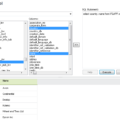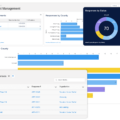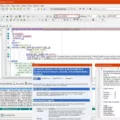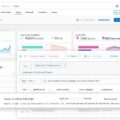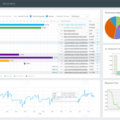Email monitoring is an important tool for businesses of all sizes to ensure their customer communication is running smoothly and efficiently. By keeping track of email traffic, bounce rates, open rates, and other metrics, businesses can make sure their emails are reaching their intended recipients successfully.
At its most basic level, email monitoring helps businesses track the performance of their email campaigns. It can help them identify which emails are being read and which ones aren’t in order to adjust the content accordingly. It can also identify any potential technical issues that might be preventing a successful delivery rate. Understanding these metrics will help businesses improve their campaigns so they get the most out of their emails.
Email monitoring is also useful when it comes to customer service. By tracking customer emails, businesses can keep up with any customer queries or complaints quickly and effectively. This helps them respond to customers in a timely manner and ensure customer satisfaction.
When it comes to email security, email monitoring is a must-have for any business. Email monitoring can detect malicious content or spam that could be damaging to your brand reputation or even pose a security risk if not addressed immediately. By monitoring your incoming and outgoing emails regularly, you’ll be able to stay one step ahead of any potential threats before they become bigger problems.
Finally, email monitoring can help businesses maintain compliance with data privacy regulations like GDPR or CCPA by ensuring all customer communications comply with the relevant rules and regulations around data privacy and security.
email monitoring is an essential tool for any business that wants to ensure its communication runs smoothly and securely while meeting compliance requirements at the same time. With the right mail server monitoring software, you’ll be able to keep up with your customers’ needs while protecting yourself from potential threats as well as maintaining legal compliance when it comes to data privacy regulations such as GDPR or CCPA.
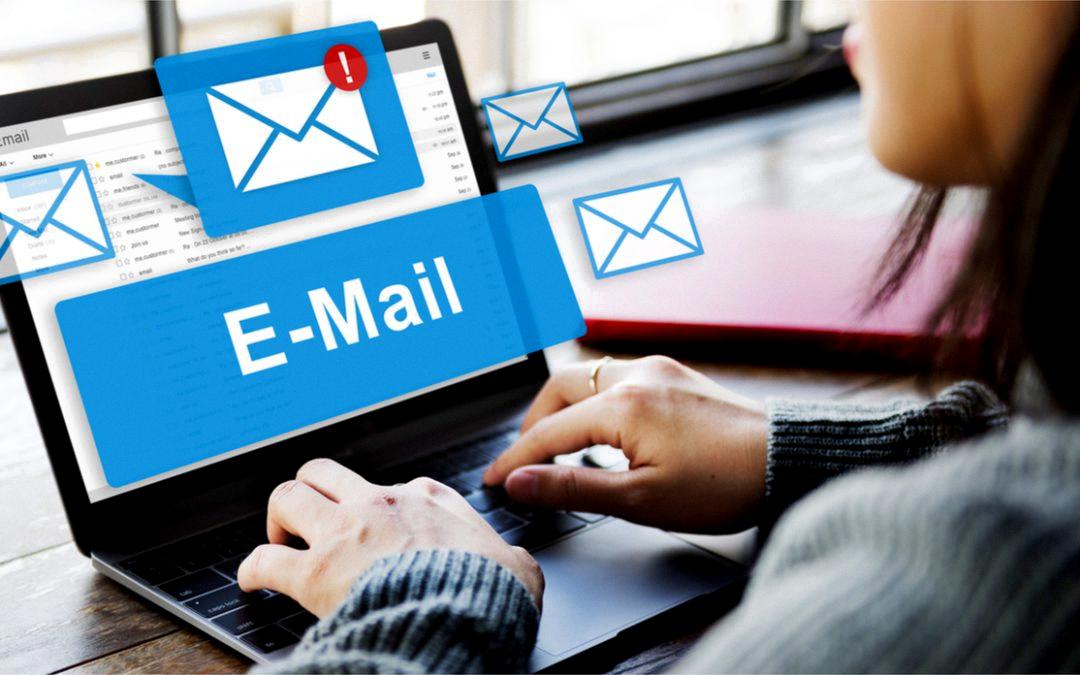
Source: taylorintime.com
The Benefits of Using an Email Monitor
Email monitoring software is an important tool for running a secure and efficient mail server. It monitors and logs incoming and outgoing emails to ensure reliable delivery, detect spam, and protect against data breaches. Email monitors also help identify and troubleshoot any problems with the mail server, including server downtime or slow performance. This can help ensure that emails are sent, received, and stored without any issues or delays. Additionally, email monitor software can be used to track the activity on the mail server in order to identify suspicious activities or potential security threats.
Monitoring Mail Servers
Mail server monitoring is a process used to monitor the performance and availability of mail servers. It allows administrators to detect and address any potential problems that could cause delays in mail delivery. This monitoring process can also detect any changes in service levels, such as changes in disk space, memory usage, processor load, and other factors. By keeping an eye on the health of the server, administrators can ensure that emails are sent and received quickly and reliably. Additionally, mail server monitoring can provide valuable insights into system performance and help identify potential threats or issues like malware or phishing attempts.
Monitoring Email Traffic
Monitoring email traffic is an important part of keeping your emails effective and engaging. Here are some steps you can take to monitor your email traffic:
1. Measure your total email traffic: You can measure the total number of emails sent and received over a certain period of time. This will give you an overall sense of how much activity is taking place in your email accounts.
2. Evaluate click-to-open ratios: Click-to-open ratio is a metric used to compare how many people who receive an email message actually click on it versus those who open it without clicking on any links or buttons. A high click-to-open rate usually indicates that the content or offer in the message resonates with the recipient and encourages them to take action on it.
3. Check your bounce rate: Your bounce rate is the percentage of emails that are undeliverable due to invalid addresses, full inboxes, or other reasons. A high bounce rate indicates that you should improve the quality of your contact list by eliminating invalid addresses and updating outdated ones.
4. Track behavioral patterns: You can use data from email campaigns to track user behavior and gain insights into what content they find interesting, what type of messaging works best, when they’re most likely to engage with emails, etc., which can help you tailor future campaigns for higher success rates.
5. Measure conversion rates: Conversion rate measures how many leads generated through email marketing actually turn into customers or subscribers, giving you an idea of how effective your messaging is at driving desired outcomes.
The Best Email Tracking Tool: Finding the Right Solution
The best email tracking tool for your business needs depends on your unique goals and requirements. To help you decide, here are some of the top-rated email tracking tools:
1. HubSpot Sales Hub – It’s a comprehensive sales automation platform that comes with advanced email tracking capabilities. It allows you to track when emails are opened, clicked, and replied to, as well as monitor how prospects engage with your emails across multiple devices.
2. SalesLoft – This is an all-in-one sales engagement platform that offers advanced email tracking capabilities. With SalesLoft, you can get detailed insights into how your prospects interact with sent emails and create customized follow-up sequences based on their actions.
3. Outreach – This tool is designed specifically for sales teams and offers powerful email tracking features such as real-time notifications when someone opens or clicks your emails. It also allows you to quickly identify the most engaged leads and prioritize them in your outreach strategy.
4. Groove – This CRM includes an email tracker that allows you to see which of your messages have been opened and who has clicked on links inside them in real-time. You can also view detailed analytics about each recipient’s engagement with your emails over time.
5. Mixmax – This is an all-in-one sales productivity platform that includes powerful email tracking features like click analytics, reply detection, open rate analysis, and more. You can also customize automated follow-ups based on how prospects interact with sent emails so you never miss an opportunity to engage them further down the funnel.
6. Monday Sales CRM – This customer relationship management software comes with built-in email tracking capabilities that allow you to monitor how recipients interact with sent messages in real-time and create automated follow-up sequences based on their actions.
7. Reply – This automated outreach solution makes it easy to track when prospects open or reply to sent messages so you can prioritize the most engaged leads in your pipeline more effectively. It also comes with detailed analytics about each contact’s engagement history over time so you can adjust your outreach strategy accordingly.
8 Freshsales – Freshsales is a CRM platform for businesses of all sizes that include advanced email tracking features like open/click notifications, automated follow-ups based on recipient behavior, and more detailed insights into each recipient’s engagement history over time
Detecting Unauthorized Access to Email Accounts
Yes, you can tell if someone logs into your email. By navigating to the “Activity on this account” page, you can view your sign-in records and see if you’re signed in to Gmail on another device, browser, or location. This section includes information such as the date, time, and location of each sign-in. If any of this information looks unfamiliar to you, it may mean that someone else has logged into your account without your permission.
The Benefits of Email Monitoring
A key reason for email monitoring is to ensure compliance with applicable laws and regulations. Monitoring emails helps organizations protect confidential information, prevent data breaches, and detect potential fraud or insider threats. Additionally, email monitoring can help organizations ensure their employees are using company resources properly and not engaging in activities that could be considered a conflict of interest. By monitoring emails, companies can also identify any malicious activity or cyberattacks in a timely manner, ensuring that their systems remain secure. Finally, email monitoring can provide valuable insight into employee productivity and help to ensure that all staff members are adhering to organizational policies.
The Importance of Email Monitoring
Email monitoring is important because it stops malicious actors from infiltrating your system or stealing data. It helps you stay ahead of cyber criminals by detecting and blocking suspicious emails that could contain malware, viruses, or phishing attempts. By monitoring incoming and outgoing emails, you can identify any potential threats before they have a chance to cause damage. Additionally, email monitoring can help you detect insider threats such as employees sending sensitive information to unauthorized third parties. Furthermore, email monitoring can help ensure compliance with data security regulations, protect customer information, and reduce the risks associated with data breaches.
Conclusion
In conclusion, email monitoring is an important tool for businesses, organizations, and individuals who need to send and receive emails. It provides an opportunity to check performance and availability while enabling administrators to identify and handle any issues that could delay mail delivery. By measuring email traffic, click-to-open ratio, bounce rate, behavioral patterns, and conversion rate, businesses can gain valuable insights into how their emails are performing and how they can improve their email campaigns. Ultimately, effective email monitoring can help businesses ensure the successful delivery of their emails without any complications or delays.

